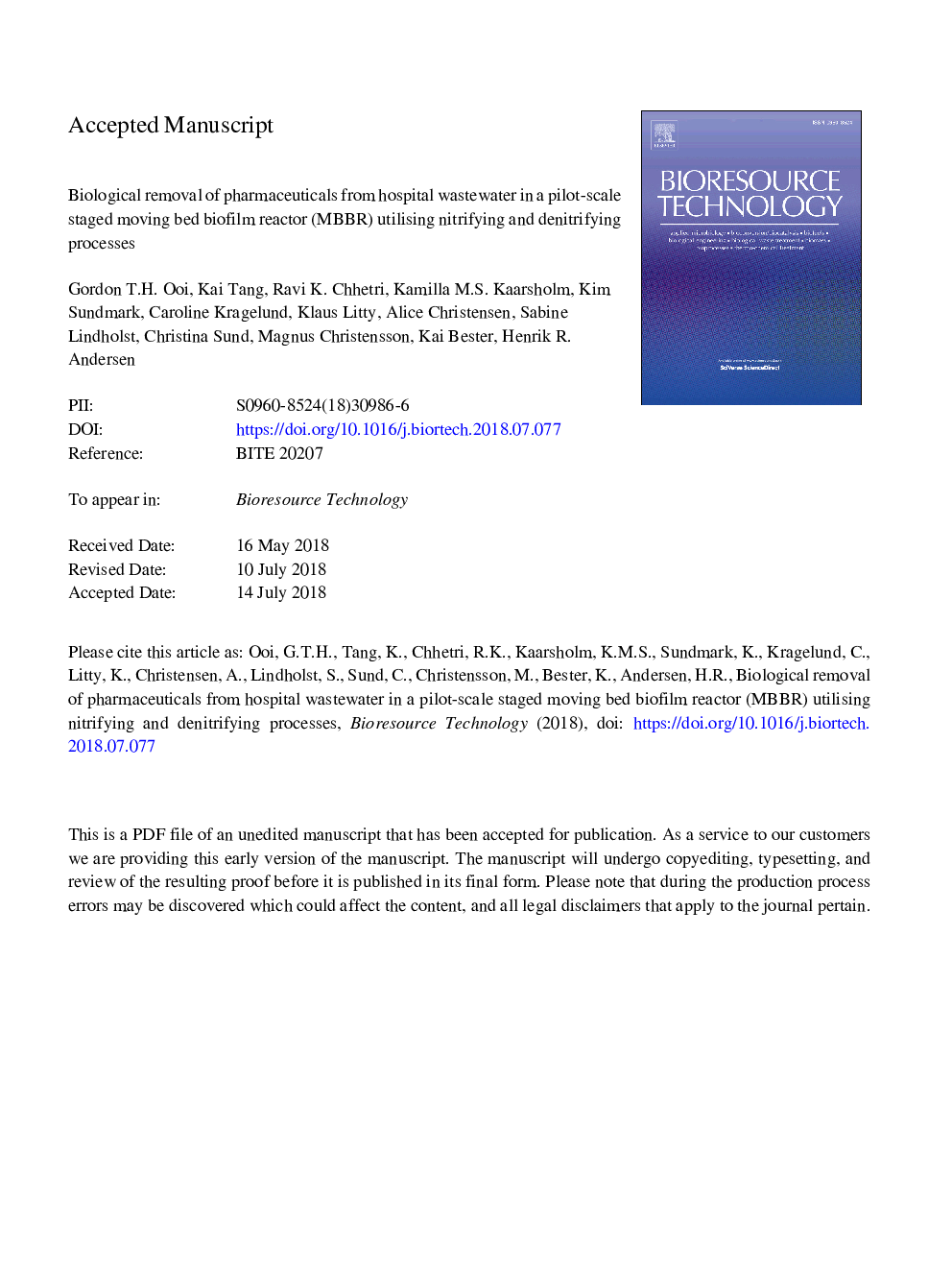| Article ID | Journal | Published Year | Pages | File Type |
|---|---|---|---|---|
| 7065890 | Bioresource Technology | 2018 | 36 Pages |
Abstract
Hospital wastewater contains high concentrations of pharmaceuticals, which pose risks to receiving waters. In this study, a pilot plant consisting of six moving bed biofilm reactors (MBBRs) in series (with the intention to integrate Biological Oxygen Demand (BOD) removal, nitrification and denitrification as well as prepolishing Chemical Oxygen Demand (COD) for ozonation) was built to integrate pharmaceutical removal and intermittent feeding of the latter reactors aimed for micropollutant removal. Based on the experimental resultss, nitrifying MBBRs achieved higher removal as compared to denitrifying MBBRs except for azithromycin, clarithromycin, diatrizoic acid, propranolol and trimethoprim. In the batch experiments, nitrifying MBBRs showed the ability to remove most of the analysed pharmaceuticals, with degradation rate constants ranging from 5.0â¯Ãâ¯10â3â¯hâ1 to 2.6â¯hâ1. In general, the highest degradation rate constants were observed in the nitrifying MBBRs while the latter MBBRs showed lower degradation rate constant. However, when the degradation rate constants were normalised to the respective biomass, the intermittently fed reactors presented the highest specific activity. Out of the 22 compounds studied, 17 compounds were removed with more than 20%.
Related Topics
Physical Sciences and Engineering
Chemical Engineering
Process Chemistry and Technology
Authors
Gordon T.H. Ooi, Kai Tang, Ravi K. Chhetri, Kamilla M.S. Kaarsholm, Kim Sundmark, Caroline Kragelund, Klaus Litty, Alice Christensen, Sabine Lindholst, Christina Sund, Magnus Christensson, Kai Bester, Henrik R. Andersen,
